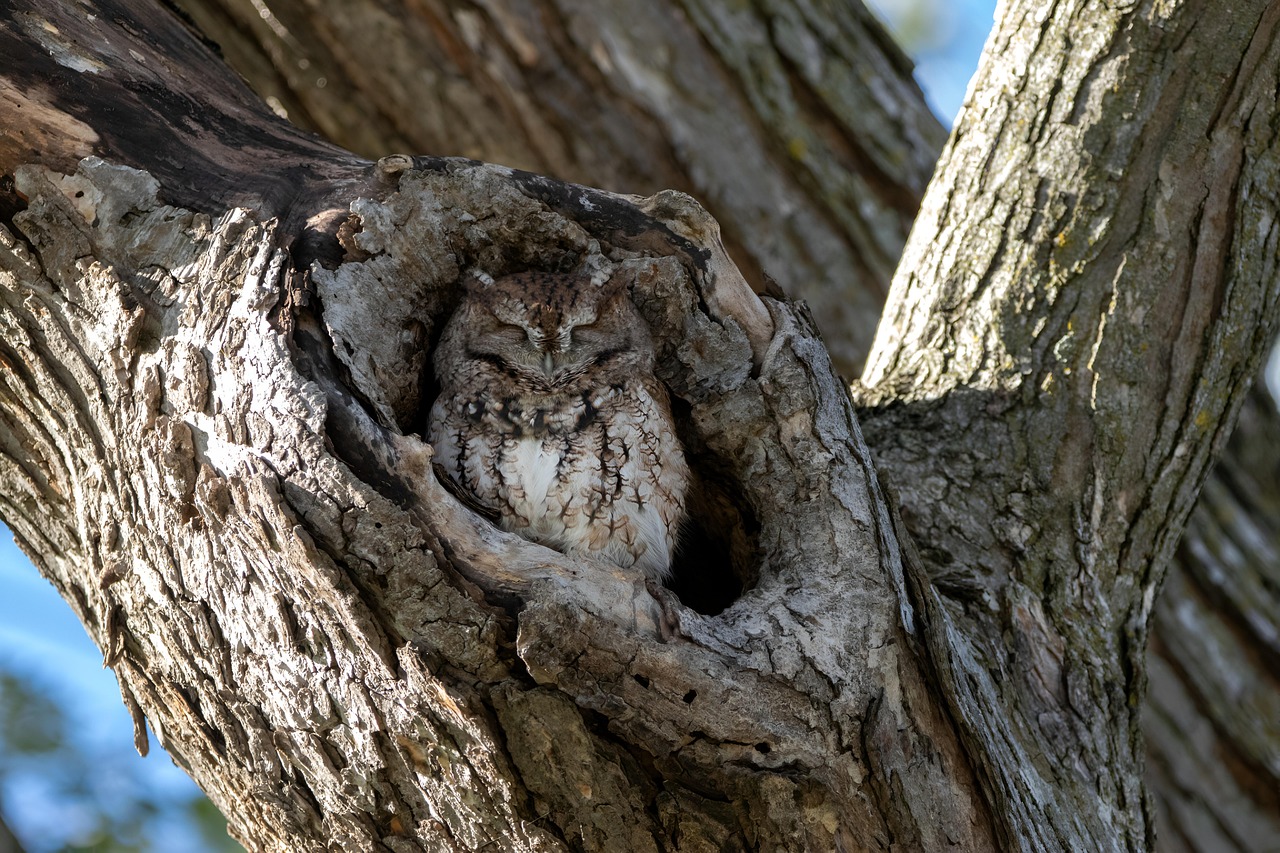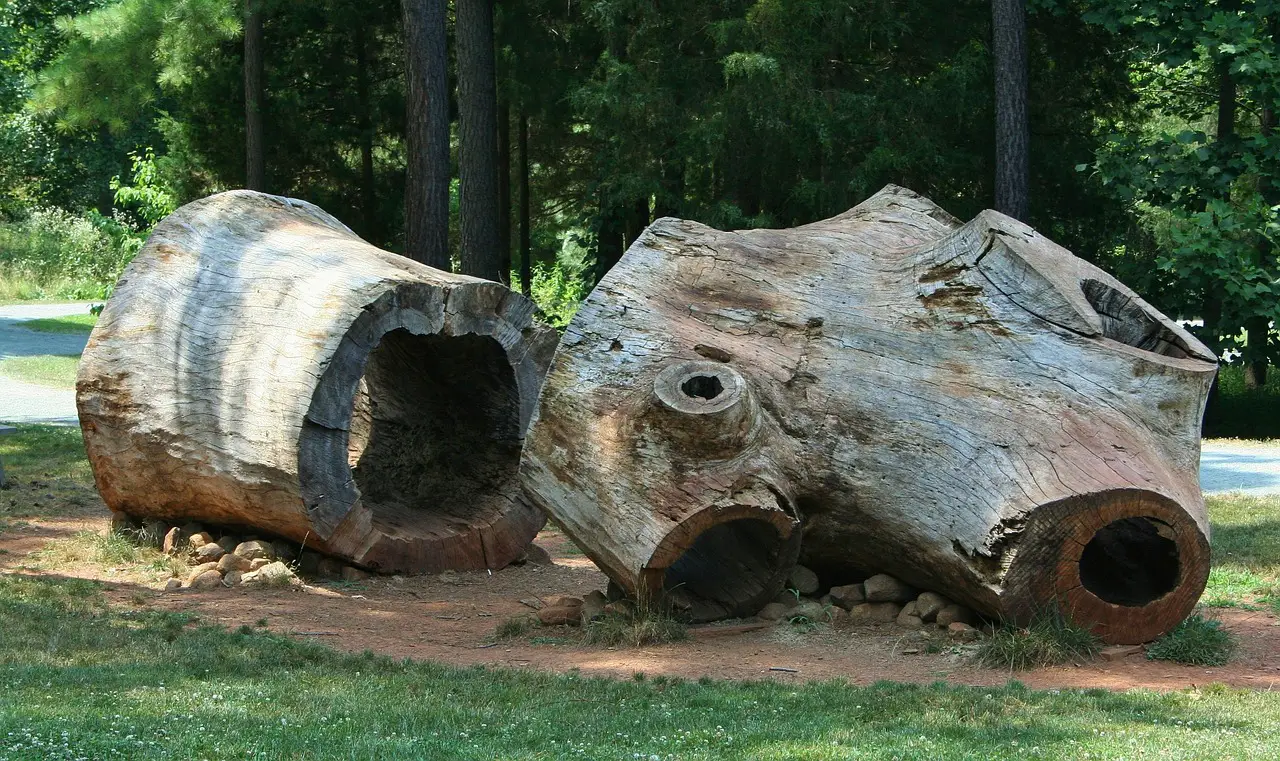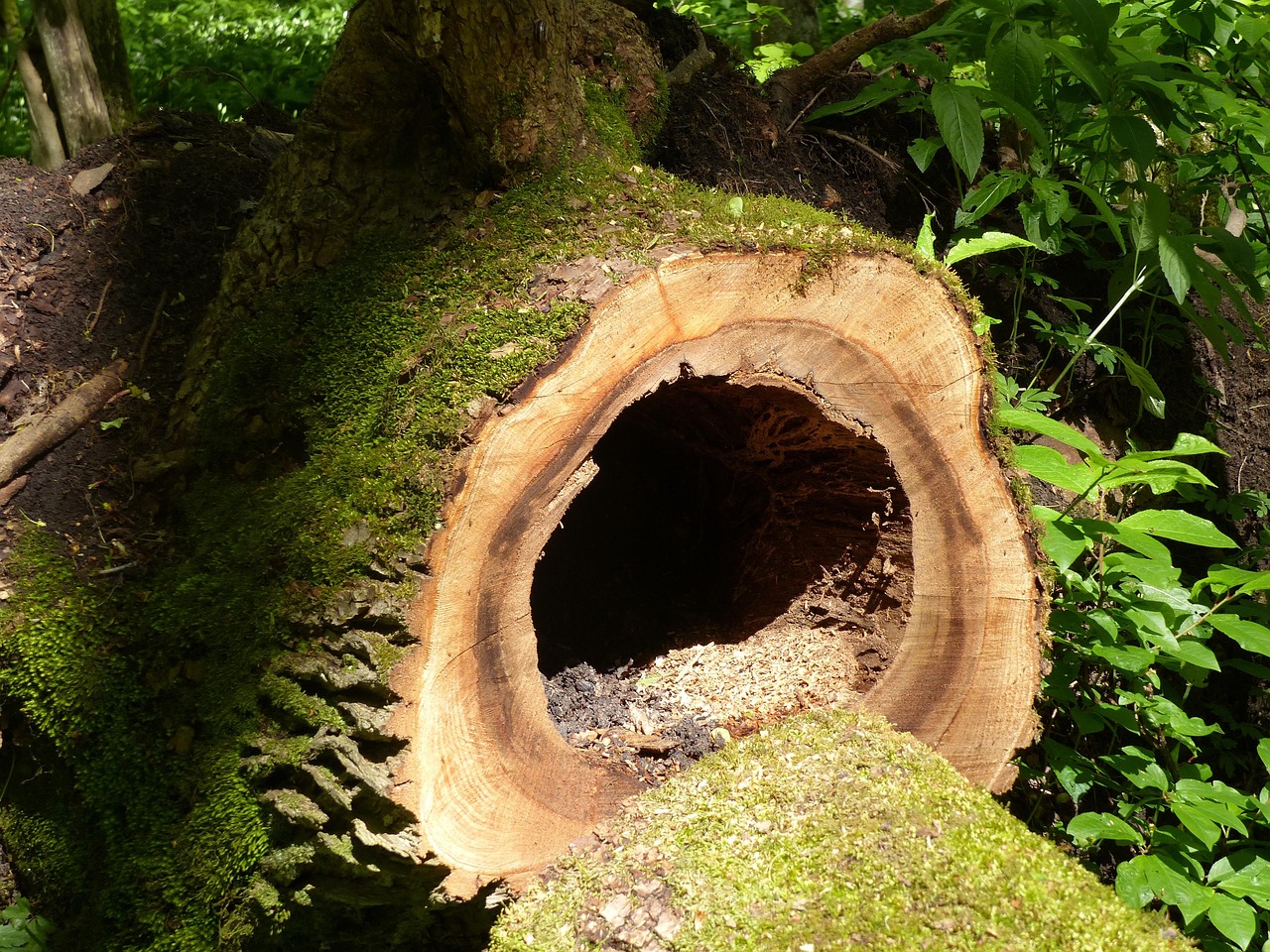Hollow Trees: How to Spot and Prevent Damage Before It’s Too Late
Hollow trees can pose significant risks to property and safety. To spot hollow trees, look for signs such as cracks in the bark, fungal growth, or soft spots on the trunk. Preventing damage involves regular inspections and prompt action if any signs of hollowness are detected.
Trees play a vital role in our ecosystem. They provide shade, produce oxygen, and offer habitat for wildlife. However, when trees become hollow, they can lead to serious concerns. A hollow tree may compromise its structural integrity, making it more susceptible to falling during storms or high winds. Understanding how to identify and manage hollow trees is crucial for property owners and arborists alike.

Hollowness in trees can occur for various reasons, including disease, insect infestation, or physical damage. Some common tree diseases that can lead to hollowness include heart rot and cankers. These conditions often weaken the wood, allowing decay to set in. Additionally, insects like woodpeckers can create holes that lead to further damage.
Recognizing the signs of a hollow tree early on can help prevent accidents and damage. Here are some key indicators to look for:
- Cracks in the Bark: Vertical or horizontal cracks can signal underlying decay.
- Fungal Growth: Mushrooms or fungus growing on the tree may indicate internal rot.
- Soft Spots: Pushing against soft or spongy areas on the trunk can reveal hollowness.
- Dead Branches: A significant number of dead branches can be a sign of distress within the tree.
Regular inspections are essential for maintaining tree health. Homeowners should consider inspecting their trees at least once a year, ideally during late winter or early spring when visibility is better. During these inspections, it is vital to check for the previously mentioned signs of hollowness.
In addition to visual inspections, sound tests can be effective in detecting hollowness. Tapping the trunk with a mallet can produce different sounds based on the tree’s condition. A dull sound may indicate that the tree is hollowed out inside, while a solid sound suggests healthy wood.
Preventing damage from hollow trees involves proactive measures. Here are some steps you can take:
- Regular Maintenance: Pruning dead branches and maintaining overall tree health can reduce risks.
- Consulting an Arborist: If you suspect a tree is hollow, it is wise to consult a certified arborist for a professional assessment.
- Removing Hazardous Trees: If a tree poses a danger, consider removing it before it falls.
- Monitoring Surroundings: Keep an eye on nearby structures and power lines; proximity to these can increase risks associated with hollow trees.
Understanding the causes of tree hollowness is also critical. Factors such as age, species, and environmental conditions all contribute to the likelihood of a tree becoming hollow. Older trees are often more susceptible due to accumulated damage over time. Certain species may also be more prone to rot than others.
The following table summarizes common tree diseases that can result in hollowness:
| Disease | Description | Symptoms |
|---|---|---|
| Heart Rot | A fungal infection that decays the inner wood of the tree. | Cavities in the trunk, soft spots. |
| Cankers | A localized area of dead tissue caused by pathogens. | Sunken areas on the bark, oozing sap. |
| Bacterial Wetwood | Bacterial infection that leads to decay and foul odors. | Dripping liquid from holes, foul smell. |
Being aware of these factors will aid in understanding how to manage trees effectively. By combining visual inspections with sound testing and awareness of diseases, property owners can take proactive steps to protect themselves and their surroundings from potential hazards posed by hollow trees.
Understanding the Impact of Hollow Trees
The presence of hollow trees can have significant implications not only for the trees themselves but also for the surrounding environment and human activities. It is essential to understand these impacts to mitigate risks effectively. Hollow trees can be a danger to nearby structures, pedestrians, and wildlife.
Risks Associated with Hollow Trees
Hollow trees present several risks that can lead to accidents or property damage. Here are some of the main concerns:
- Structural Instability: As hollowness increases, the tree’s ability to support its weight declines. This instability can lead to the tree falling unexpectedly.
- Falling Branches: Decayed sections of a hollow tree can break off and fall, posing a hazard to anyone nearby.
- Pest Infestation: Hollow trees can attract pests such as carpenter ants and termites, which may spread to healthy trees or structures.
- Root Damage: The decay process can also extend to the roots, making them weak and increasing the risk of uprooting.
Effects on Wildlife
While hollow trees can pose risks, they also serve critical ecological functions. Many species rely on hollow trees for habitat. Birds, bats, and insects often use these trees for nesting or shelter. Understanding how to balance safety with ecological preservation is vital in managing hollow trees.
Here are some ways hollow trees benefit wildlife:
- Nesting Sites: Birds such as woodpeckers and owls often choose hollow trees for nesting, providing a safe environment for their young.
- Food Sources: Insects that inhabit decaying wood can serve as food for birds and other animals, creating a rich feeding ground.
- Microhabitats: The decaying bark and inner wood create unique microhabitats that support diverse organisms.
Management Strategies for Hollow Trees

Effective management of hollow trees requires a balanced approach that considers both safety and ecological value. Here are several strategies for property owners:
Regular Monitoring
Regular monitoring of tree health is crucial. Property owners should establish a routine inspection schedule to assess tree conditions. Consider the following:
- Visual Inspections: Look for signs of decay, cracks, and fungal growth.
- Sound Testing: Use tapping methods to detect hollow sounds within the trunk.
- Professional Assessments: Engage arborists for detailed evaluations if significant concerns arise.
Pruning and Maintenance
Maintaining healthy trees through proper pruning can significantly reduce risks associated with hollowness. Here are some maintenance practices:
- Remove Dead Branches: Pruning dead or dying branches helps prevent potential hazards.
- Avoid Excessive Topping: Topping can lead to stress and decay; instead, focus on selective pruning.
- Watering and Fertilizing: Ensure trees receive adequate water and nutrients to promote overall health.
When to Remove a Hollow Tree
If a tree is assessed to be unsafe and poses a risk to people or property, removal may be necessary. Key factors to consider include:
- Extent of Hollowness: A tree that is significantly hollowed out is more likely to be unstable.
- Location: Trees situated near homes, power lines, or frequently used pathways present higher risks.
- Health of Surrounding Trees: If a hollow tree is infested with pests, it may threaten nearby healthy trees.
It is important to hire professionals for tree removal to ensure safety and compliance with local regulations regarding tree work. Additionally, consider replanting native species in the area where a tree has been removed to support local ecology.
The Role of Technology in Tree Management

Modern technology is enhancing how we monitor and manage tree health. Tools such as drones and imaging software allow for aerial inspections and detailed assessments without putting people at risk. Below are some examples of how technology is being utilized in tree management:
- Drones: Equipped with cameras, drones can survey large areas quickly, identifying trees that may need attention.
- Sensors: Soil moisture sensors can help determine if a tree is receiving adequate water.
- Tree Health Apps: Mobile applications allow users to document tree conditions and share information with professionals.
The integration of technology in tree management provides new opportunities for proactive monitoring and intervention, ultimately leading to healthier urban forests.

Community Involvement in Tree Management
Community involvement plays a vital role in the effective management of trees, especially in urban areas. Encouraging residents to participate in tree care can significantly enhance the health of local trees and contribute to safer environments. Collaboration between community members, local governments, and organizations is essential for fostering a culture of tree stewardship.
Education and Awareness Programs
One of the most effective ways to engage the community is through education and awareness programs. These initiatives can inform residents about the importance of trees and how to spot signs of tree distress. Here are some aspects that can be included in such programs:
- Workshops: Organize workshops that teach participants how to identify tree health issues, including hollowness and other concerns.
- Tree Care Clinics: Host clinics where experts provide free assessments of local trees and offer advice on maintenance.
- Informational Campaigns: Use flyers, social media, and local events to share tips on tree care and safety.
Volunteer Tree Planting Events
Community-led tree planting events not only enhance the urban forest but also foster a sense of ownership among residents. Engaging citizens in planting new trees helps to replace those that have been removed due to damage or disease. Here are some considerations for organizing such events:
- Selecting Native Species: Choose trees that are native to the area, as they are more likely to thrive and support local wildlife.
- Collaboration with Local Organizations: Partner with local environmental groups, schools, and businesses to maximize resources and participation.
- Providing Education: Teach participants proper planting techniques to ensure the long-term survival of the newly planted trees.
Local Regulations and Tree Preservation
Understanding local regulations regarding tree preservation is crucial for both property owners and community members. Many municipalities have guidelines designed to protect urban forests, especially regarding the removal of trees. Knowing these regulations can help prevent unlawful removals and promote responsible tree management.
Tree Protection Ordinances
Tree protection ordinances often dictate how trees can be managed in urban settings. These may include:
- Permits for Removal: Many locations require permits for removing trees above a certain size or age.
- Replacement Requirements: If a tree is removed, regulations may mandate that a new tree be planted to maintain canopy cover.
- Protected Species Lists: Some trees are designated as protected species, requiring special consideration before any management actions.
Community Participation in Policy Development
Encouraging community participation in the development of tree management policies helps ensure that local needs are addressed. Residents can advocate for stronger protections for trees through:
- Public Meetings: Attend city council meetings or public forums to voice opinions on tree management policies.
- Pleading for Urban Forestry Programs: Support initiatives that promote urban forestry and sustainable practices within the community.
- Creating Advocacy Groups: Form groups focused on tree preservation to strengthen community voices and influence local decision-making.
The Importance of Biodiversity in Tree Management
Biodiversity is essential for maintaining healthy ecosystems. In the context of tree management, promoting biodiversity can help create resilient urban forests. Diverse plant life fosters a balanced ecosystem that supports various wildlife species while also enhancing aesthetic appeal.
Diverse Planting Strategies
Diversifying tree species in urban areas minimizes risks associated with pests and diseases. If one species is affected, others may remain healthy, ensuring overall forest stability. Consider these strategies:
- Mixing Species: Plant a variety of tree species rather than relying on a single type to reduce vulnerability to pests.
- Age Diversity: Include trees of different ages in plantings to create a more dynamic ecosystem.
- Native vs. Non-native Species: While non-native species can add diversity, prioritize native trees for their compatibility with local wildlife.
The Role of Trees in Urban Climate Mitigation
Trees play a crucial role in mitigating climate change effects in urban environments. Their presence can reduce heat islands, improve air quality, and sequester carbon dioxide. Implementing effective tree management practices contributes positively to climate goals.
- Shade Provision: Trees provide shade that can cool urban areas, reducing energy consumption in buildings.
- Aesthetic Value: Green spaces enhance mental well-being, encouraging outdoor activity and community engagement.
- Stormwater Management: Trees help absorb rainwater, reducing runoff and lessening flood risks during heavy storms.
Acknowledging the multifaceted benefits of trees reinforces the need for comprehensive management strategies that encompass ecological health and community safety.
Maintaining Tree Health Through Sustainable Practices
Sustainable practices are vital for ensuring the long-term health of urban trees and the ecosystems they support. By adopting environmentally friendly approaches, communities can enhance their tree management efforts while contributing to a healthier planet. Here are several sustainable practices that can be implemented:
Organic Pest Management
Using organic methods for pest management helps protect tree health without introducing harmful chemicals into the environment. Some effective strategies include:
- Natural Predators: Introducing or encouraging natural predators can help control pest populations. For example, ladybugs can reduce aphid numbers.
- Neem Oil: This natural pesticide can be used to deter various insects while being safe for beneficial species.
- Companion Planting: Planting certain flowers or herbs near trees can naturally repel pests.
Soil Health Improvement
Healthy soil is fundamental for tree vitality. Soil management practices to consider include:
- Mulching: Applying organic mulch around the base of trees helps retain moisture, suppress weeds, and improve soil quality as it decomposes.
- Composting: Adding compost enriches soil with nutrients, promoting healthy root development.
- Regular Soil Testing: Testing soil pH and nutrient levels helps determine the specific needs of trees.
Water Conservation Techniques
Implementing water conservation techniques is essential, especially in areas prone to drought. Strategies include:
- Drip Irrigation: This efficient method delivers water directly to the root zone, minimizing evaporation and runoff.
- Rainwater Harvesting: Collecting rainwater for irrigation can significantly reduce dependency on municipal water sources.
- Drought-Resistant Species: Opting for drought-tolerant tree species can help sustain urban forests during dry periods.
The Economic Value of Trees
Trees provide substantial economic benefits to communities. The following points illustrate their value:
- Increased Property Values: Well-maintained trees enhance the aesthetic appeal of neighborhoods, often leading to higher property values.
- Energy Savings: Trees strategically planted around homes can lower energy bills by providing shade and windbreaks.
- Job Creation: Urban forestry initiatives create jobs in tree care, landscaping, and environmental education.
The economic advantages associated with healthy trees underscore the importance of investing in tree management programs and community engagement efforts.
Final Thoughts
The management of hollow trees is a critical aspect of maintaining urban forests and ensuring community safety. By understanding how to identify hollow trees, recognize the risks they pose, and implement effective management strategies, property owners and communities can protect their investments and enhance local ecosystems.
Community involvement, education, and sustainable practices all play vital roles in promoting tree health. By fostering awareness and encouraging participation in tree care initiatives, communities can create a culture that values and protects urban forests. Furthermore, embracing technology in monitoring tree health provides new opportunities for proactive engagement in urban forestry.
The multifaceted benefits of trees extend beyond aesthetics; they contribute to ecological balance, climate mitigation, and economic prosperity. As we move forward, prioritizing tree management will be essential in building resilient urban environments that thrive for generations to come. By working together, we can ensure the health of our trees and the safety of our communities.
